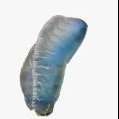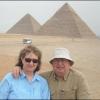-
Posts
1,305 -
Joined
-
Last visited
Reputation Activity
-
 Papa got a reaction from Zarkon in Armed Virginia Sloop by captgino - FINISHED - Model Shipways - 1/48
Papa got a reaction from Zarkon in Armed Virginia Sloop by captgino - FINISHED - Model Shipways - 1/48
incredibly neat work. This is a beautiful model.
-
 Papa got a reaction from mtaylor in "Height Adjustable Workbench" sorta.
Papa got a reaction from mtaylor in "Height Adjustable Workbench" sorta.
It is so obvious I wonder why it took me so long to see it.
-
 Papa got a reaction from mtaylor in SMS Helgoland by Papa - Modelik - 1:200 - CARD
Papa got a reaction from mtaylor in SMS Helgoland by Papa - Modelik - 1:200 - CARD
OH WOW!!!!! Thanks so much. Google gets a bit confused sometimes, and this is so much clearer. Thank you thank you
-
 Papa got a reaction from mtaylor in SMS Helgoland by Papa - Modelik - 1:200 - CARD
Papa got a reaction from mtaylor in SMS Helgoland by Papa - Modelik - 1:200 - CARD
Thanks. Generally google translate is doing ok. I just have to take the build slowly and double check everything
-
 Papa got a reaction from mtaylor in SMS Helgoland by Papa - Modelik - 1:200 - CARD
Papa got a reaction from mtaylor in SMS Helgoland by Papa - Modelik - 1:200 - CARD
OK, I studied the directions some more. A "W" indicates "cut". The W in the attached picture is about where one of the masts should be. I am wondering about the other tiny white disks. Are they to be drilled out for davits or rails?
-
 Papa got a reaction from marktiedens in "Height Adjustable Workbench" sorta.
Papa got a reaction from marktiedens in "Height Adjustable Workbench" sorta.
They say necessity is the mother of invention. I realized the other day that the drawers in my work bench make shelves of different heights just right for rigging the ratlines on my Granado.
-
 Papa reacted to Dziadeczek in SMS Helgoland by Papa - Modelik - 1:200 - CARD
Papa reacted to Dziadeczek in SMS Helgoland by Papa - Modelik - 1:200 - CARD
I took a liberty of translating these Polish instructions for you (page 1 of your scans).
Hopefully, this will be of help for you in building your model.
Regards,
Thomas
SMS „Helgoland” entered the service in Autumn 1914, stationed in the Sebenico base. Her active duty ensued with the bombardment of Italian Coast and continued throughout the entire war time; till its end she was conducting very intensive activities, having both, successes (e.g. sinking an Italian destroyer “Turbine”, raming a French submarine “Monge”, sinking five and damaging three luggers in the Otranto narrows, participating in sinking several other warships and civilian ships. She also had suffered from enemy artillery and airplane bombs but overall she was rather a lucky ship and had survived till the end of the war in a pretty good shape.
In between 1st through 3rd of February 1918 the crew rebelled and together with crews from other ships anchored in the Cattaro Bay, tried to begin an uprising. The control on the “Helgoland” was eventually regained, and the leaders of the mutiny were shot.
After the war, according to the peace treaty, the ship was acquired by the Italians. After a major rebuild and rearming, she became an auxillary ship. During the Abyssinian conflict, she was securing the Adriatic Sea from the Yugoslavian fleet joining the war efforts on the British side.
In March 1937 she was struck from the fleet list and soon after, scrapped.
Technical/tactical Data:
Length: 130.6 m
Width: 12.77 m
Draught: 4.55 m
Displacement: 3500 t
Engines: 29.000 KM
Speed: 27 knots
Armor: 60 mm bulwarks; 20 mm decks
Armament: 9x100 mm; 1x70 mm; 3x2 torpedo tubes
Crew: 340
General notes:
The model is easy to build and is suitable for medium advanced modelers. They can do away with rails and simplify masting and rigging, if desired.
In the model instructions additional symbols were utilized:
*-glue onto a 0.5 mm cardboard
** - glue onto a 1 mm cardboard
W – cut
(scissors symbol) – cut through
L; P – left part, right part
Descriptions of the construction
Following the pic. (rys.1), assemble and glue the hull skeleton with decks. As indicated by the symbols, all parts of the skeleton and decks have to be thickened by gluing them earlier onto 1 mm cardboard. Before cutting them out, pierce or drill holes for the stanchions of the railings, cranes, masts, flagstaffs, and so on. Finished skeleton should be then covered with bottom planking, using joining strips – parts 1 thru 9. Glue elements W4a and D3a in the indicated places. Now glue bulwark strips: first at the bow and stern, later on the middle one, which is deliberately longer (reserve). From the inner side, glue part 12a. Thicken and glue bulwark armors, parts 13 and 13a. I advise to retouch edges with water paints before gluing them. Along the hatched lines glue to the keel antiheeling (?) elements K. Due to the risk of damaging the rudder and drive shafts at this time, I advise to postpone their assembly until later.
The hull is now completed, it is time to begin assembly of deck equipment. Begin with smokestack bases, parts 14-17 Glue stacks, following drawing (Rys.) 2, from parts 18 and 19 + wire I. Next to the last smokestack glue two columns with gangplanks and stairs, part 20 (see drawing 3). Complete with elements 21a, 21b the superstructures of boilerhouse ventilation 21 and glue them onto the deck. Glue in the indicated place on the fore deck ventilation shaft 22. Following drawing 4 glue deckhouse with ventilation shaft, part 23, and acc. to drawing 5 deckhouse with skylights p. 24-25.
Notice: glue deck 24a 3 mm below the edge of the wall and paint over visible inner surface of the wall. Skylights, p. 26, 27, 29, 30, 35 and 37 glue onto the deck in the indicated places. Glue two stern lifts with p. 28 (drawing 6) and attach (glue) them on the deck. Details p. 31 and 36 glue in the indicated places, part 32 acc. to drawing 5.
Assemble and glue stern deckhouse p. 38. In the decks make an opening for a mast. On the deck there is an indicated (with a line) place to attach stairs. Acc. to drawing 7, assemble a main (commander’s) deckhouse from parts 39-42 and mount it on the deck. Support the gangways with columns made from wire. Glue in the indicated places parts 43, 44, 46 breakwater p. 45. From p. 47 make and mount two anchor hoists, similar with part 48. Part 49 (pic.8) glue on the bow. Acc. to pic 9 assemble the barrels of main artillery cannons cal. 100mm and place them on the deck. Glue 3 double torpedo tubes with or without torpedoes from parts 51 and place them on the deck (pic. 10) Following pic. 11 assemble from part 52 and a pin, a gun cal. 70 mm and glue it on the stern. Acc. to pic. 13 assemble three reflectors from part 53 and glue them in shown places. From part 54 assemble two drums for firehoses and glue them to the smokestacks bases, p. 14 and 15. Subsequently assemble and glue the following: from p. 55 ventilators (to the deck); from p. 56 drums (to the deckhouse 24 – see pic 5 and to the wall W4a. Details 57 and 58 glue onto the main deck and deckhouses’ decks – see pic. 7 and a general pic. Glue into them pins with grey heads. In indicated places glue on the deck subsequent elements: 59, 60 and 61. Gangplanks 62 glue acc. to general pic, suspending them by a thread on wire zurawiki. IV. Assemble and glue from p. 63 davitts for lifeboats wrapped around a wire II and III (Smaller for hanging boats). From parts 64-70 assemble 8 lifeboats and motorboats acc. to pic. 12, 13 and 14 (assembled together in similar fashion) and glue them on their bases or suspend them by a thread on the davitts (see general pic) Anchors p. 71 and 72 glue to the bulwarks.
Now from p. 73, 74 and 75 and wire or wooden dowel assemble and glue a rudder (pattern VI) and two propulsion shafts with propellers.
What remains now is gluing stairs leading from the foredeck onto the maindeck p. 76 and modeling the masting/rigging. A flag p.77 should be glued to the flagstaff V on the bow. Acc. to the drawings, make a mainmast and mizenmast from wire or dowels and mount them acc. to the general drawing. Glue a gangplank 78, a top 80 and flags 79 and 80. Make remaining elements from dowels, wire and threads, specifically rigging, rails, suports for propellers (pattern VII) an arm of a crane (pattern VIII). Lastly make liferings p. 82 and mount them on the rails acc. to general pic. The entire model finally should be carefully retouched with water paints.
-
 Papa got a reaction from reklein in SMS Helgoland by Papa - Modelik - 1:200 - CARD
Papa got a reaction from reklein in SMS Helgoland by Papa - Modelik - 1:200 - CARD
I finished the skeleton, except for the decks. The instructions say that the deck pieces are to be glued to 1 mm card but the schematics don not indicate this. (a "**" is attached to the part number if it is to be glued to a card; the deck pieces don't have this indication.) I decided to follow the written instructions and have glued them to a card. Hope it works out OK.
-
 Papa got a reaction from Canute in SMS Helgoland by Papa - Modelik - 1:200 - CARD
Papa got a reaction from Canute in SMS Helgoland by Papa - Modelik - 1:200 - CARD
Thanks. Generally google translate is doing ok. I just have to take the build slowly and double check everything
-
 Papa got a reaction from riverboat in IJN Amatsukaze by Dan Vadas - FINISHED - Halinski - 1:200 scale - CARD and Brass - WW2 Japanese Destroyer -
Papa got a reaction from riverboat in IJN Amatsukaze by Dan Vadas - FINISHED - Halinski - 1:200 scale - CARD and Brass - WW2 Japanese Destroyer -
If you do not happen to like Ferrero Rocher chocolates you can send them to me after unwrapping.
-
 Papa got a reaction from mtaylor in SMS Helgoland by Papa - Modelik - 1:200 - CARD
Papa got a reaction from mtaylor in SMS Helgoland by Papa - Modelik - 1:200 - CARD
Helgoland instructions
-
 Papa got a reaction from mtaylor in SMS Helgoland by Papa - Modelik - 1:200 - CARD
Papa got a reaction from mtaylor in SMS Helgoland by Papa - Modelik - 1:200 - CARD
I will scan the "directions" today. I have figured out that the tiny white spots are for rigging.
-
 Papa got a reaction from mtaylor in SMS Helgoland by Papa - Modelik - 1:200 - CARD
Papa got a reaction from mtaylor in SMS Helgoland by Papa - Modelik - 1:200 - CARD
Danny, Thanks for the advice. The plans aren't very detailed, but, the more I stare at them the more I see.
-

-
 Papa got a reaction from mtaylor in SMS Helgoland by Papa - Modelik - 1:200 - CARD
Papa got a reaction from mtaylor in SMS Helgoland by Papa - Modelik - 1:200 - CARD
The instructs say to pre-drill the mast holes. It is not clear to me on the deck plan where the mast holes are.
-
 Papa got a reaction from tlevine in "Height Adjustable Workbench" sorta.
Papa got a reaction from tlevine in "Height Adjustable Workbench" sorta.
They say necessity is the mother of invention. I realized the other day that the drawers in my work bench make shelves of different heights just right for rigging the ratlines on my Granado.
-
 Papa got a reaction from Canute in SMS Helgoland by Papa - Modelik - 1:200 - CARD
Papa got a reaction from Canute in SMS Helgoland by Papa - Modelik - 1:200 - CARD
I will scan the "directions" today. I have figured out that the tiny white spots are for rigging.
-
 Papa got a reaction from Canute in SMS Helgoland by Papa - Modelik - 1:200 - CARD
Papa got a reaction from Canute in SMS Helgoland by Papa - Modelik - 1:200 - CARD
OK, I studied the directions some more. A "W" indicates "cut". The W in the attached picture is about where one of the masts should be. I am wondering about the other tiny white disks. Are they to be drilled out for davits or rails?
-
 Papa got a reaction from Altduck in SMS Helgoland by Papa - Modelik - 1:200 - CARD
Papa got a reaction from Altduck in SMS Helgoland by Papa - Modelik - 1:200 - CARD
OK, I studied the directions some more. A "W" indicates "cut". The W in the attached picture is about where one of the masts should be. I am wondering about the other tiny white disks. Are they to be drilled out for davits or rails?
-
 Papa got a reaction from popeye the sailor in IJN Amatsukaze by Dan Vadas - FINISHED - Halinski - 1:200 scale - CARD and Brass - WW2 Japanese Destroyer -
Papa got a reaction from popeye the sailor in IJN Amatsukaze by Dan Vadas - FINISHED - Halinski - 1:200 scale - CARD and Brass - WW2 Japanese Destroyer -
If you do not happen to like Ferrero Rocher chocolates you can send them to me after unwrapping.
-
 Papa got a reaction from nancysqueaks in SMS Helgoland by Papa - Modelik - 1:200 - CARD
Papa got a reaction from nancysqueaks in SMS Helgoland by Papa - Modelik - 1:200 - CARD
I finished the skeleton, except for the decks. The instructions say that the deck pieces are to be glued to 1 mm card but the schematics don not indicate this. (a "**" is attached to the part number if it is to be glued to a card; the deck pieces don't have this indication.) I decided to follow the written instructions and have glued them to a card. Hope it works out OK.
-
 Papa got a reaction from nancysqueaks in SMS Helgoland by Papa - Modelik - 1:200 - CARD
Papa got a reaction from nancysqueaks in SMS Helgoland by Papa - Modelik - 1:200 - CARD
I think I am finally understanding how the hull is supposed to go together.
-
 Papa got a reaction from Canute in SMS Helgoland by Papa - Modelik - 1:200 - CARD
Papa got a reaction from Canute in SMS Helgoland by Papa - Modelik - 1:200 - CARD
I finished the skeleton, except for the decks. The instructions say that the deck pieces are to be glued to 1 mm card but the schematics don not indicate this. (a "**" is attached to the part number if it is to be glued to a card; the deck pieces don't have this indication.) I decided to follow the written instructions and have glued them to a card. Hope it works out OK.
-
 Papa got a reaction from mtaylor in SMS Helgoland by Papa - Modelik - 1:200 - CARD
Papa got a reaction from mtaylor in SMS Helgoland by Papa - Modelik - 1:200 - CARD
I finished the skeleton, except for the decks. The instructions say that the deck pieces are to be glued to 1 mm card but the schematics don not indicate this. (a "**" is attached to the part number if it is to be glued to a card; the deck pieces don't have this indication.) I decided to follow the written instructions and have glued them to a card. Hope it works out OK.
-
 Papa got a reaction from Dan Vadas in SMS Helgoland by Papa - Modelik - 1:200 - CARD
Papa got a reaction from Dan Vadas in SMS Helgoland by Papa - Modelik - 1:200 - CARD
I finished the skeleton, except for the decks. The instructions say that the deck pieces are to be glued to 1 mm card but the schematics don not indicate this. (a "**" is attached to the part number if it is to be glued to a card; the deck pieces don't have this indication.) I decided to follow the written instructions and have glued them to a card. Hope it works out OK.










